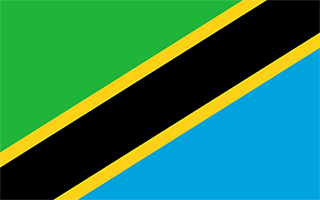Summary
The remains of two great East African ports admired by early European explorers are situated on two small islands near the coast. From the 13th to the 16th century, the merchants of Kilwa dealt in gold, silver, pearls, perfumes, Arabian crockery, Persian earthenware and Chinese porcelain; much of the trade in the Indian Ocean thus passed through their hands.
Location on Map
Show bigger map on Openstreetmap
Introduction
The Ruins of Kilwa Kisiwani and Ruins of Songo Mnara, located in the Lindi Region, District of Kilwa, Tanzania, are two UNESCO World Heritage sites that bear witness to the rich history and cultural significance of the Swahili coast. These ruins, dating back to the 9th century, provide a glimpse into the prosperous trading cities that once thrived in this region.
History
The history of the Ruins of Kilwa Kisiwani and Ruins of Songo Mnara is closely intertwined with the Swahili civilization, which emerged as a result of the Indian Ocean trade network. Kilwa Kisiwani, the larger of the two sites, was a major trading hub from the 9th to the 16th century, attracting merchants from across the world. It was renowned for its gold, ivory, and slave trade, which brought immense wealth to the city.
During its peak, Kilwa Kisiwani was ruled by the Sultan of Kilwa, who controlled a vast empire stretching along the East African coast. The city flourished under the sultanate, with the construction of grand palaces, mosques, and fortifications. The Great Mosque of Kilwa, built in the 12th century, stands as a testament to the architectural prowess of the Swahili people.
Songo Mnara, located on a nearby island, was a smaller but equally important trading center. It served as a satellite town to Kilwa Kisiwani and shared similar architectural styles and cultural practices. The ruins of Songo Mnara include a palace, mosque, and numerous residential structures.
Current State
Today, the Ruins of Kilwa Kisiwani and Ruins of Songo Mnara are protected UNESCO World Heritage sites, attracting visitors from around the world. These sites offer a unique opportunity to explore the remnants of a once-thriving civilization and gain insights into the Swahili culture.
The ruins of Kilwa Kisiwani are spread across a large area, with notable structures including the Great Mosque, the Palace of Husuni Kubwa, and the Gereza Fort. The Great Mosque, with its intricate coral stone carvings and imposing minaret, is a highlight of the site. The Palace of Husuni Kubwa, believed to be the largest pre-colonial sub-Saharan structure, showcases the opulence of the sultanate.
The ruins of Songo Mnara, though smaller in size, are equally captivating. The palace, with its well-preserved walls and courtyards, provides a glimpse into the daily life of the Swahili elite. The mosque, adorned with decorative elements, reflects the religious and cultural significance of the site.
Both sites face challenges in terms of preservation and conservation. The coastal location exposes the ruins to erosion and saltwater damage. Efforts are being made to protect and restore these sites, including the use of traditional building techniques and community involvement.
In conclusion, the Ruins of Kilwa Kisiwani and Ruins of Songo Mnara in Tanzania are remarkable UNESCO World Heritage sites that offer a window into the prosperous trading cities of the Swahili coast. These ruins, with their architectural grandeur and historical significance, serve as a testament to the rich cultural heritage of the region. Efforts to preserve and protect these sites ensure that future generations can continue to appreciate and learn from their historical and cultural value.
